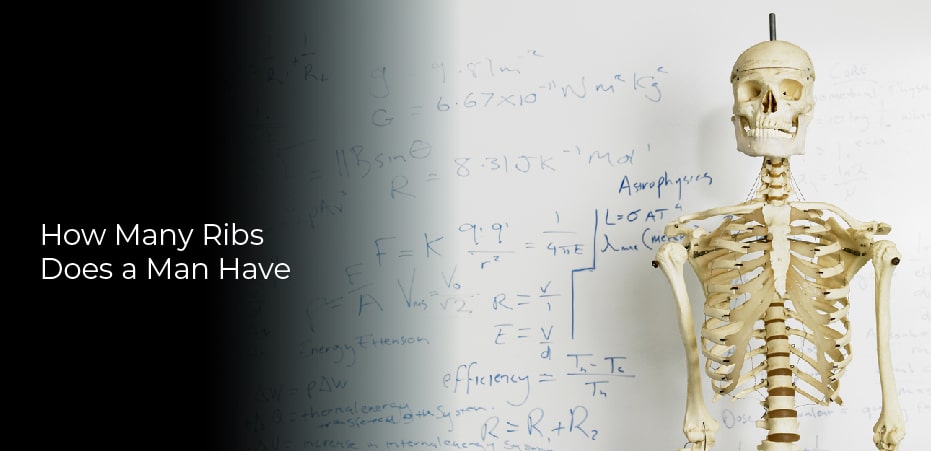Usually, a man can have up to three ribs, but it depends on your genetics. You might be blessed with extra ribs if you have a large family of siblings. Moreover, you can have one or two ribs if you have a small family. Many factors can contribute to your rib count, so it is always better to ask your doctor to give you an accurate estimate of your ribs.
What Do You Know About 12 Ribs in Man?
The 12 pairs of ribs are named according to their position relative to the body. The first seven pairs, starting from the top and continuing downward, are known as true ribs. These include the following:
- 1st rib (also known as the “sternal” rib).
- 2nd – 7th ribs (known collectively as vertebrosternal ribs).
- The next three pairs of ribs – 8th – 10th (known collectively as vertebrochondral ribs) – are false ribs because they don’t attach directly to the sternum.
- The last two pairs of ribs, the 11th and 12th (known collectively as floating ribs) do not attach to the sternum.
Causes Of Rib Number Variations
Rib numbers vary for a variety of reasons, including genetics and environmental factors. Sometimes, people may be born with fewer or more ribs than the typical 12 pairs. Accessory ribs are most commonly found in the cervical (neck) area but can also be found at other locations along the rib cage.
Some have even formed a partial or complete ring around the chest. Generally, these additional ribs are benign and don’t cause any health problems. However, they can pressure other organs and tissues, leading to complications such as breathing difficulties.
Similarly, some people may be born with fewer than 12 pairs of ribs due to a condition known as congenital fusion. In this case, two or more ribs may be fused, resulting in a rib count that is less than the typical 12 pairs. Again, this condition typically doesn’t cause any health issues but can cause discomfort and difficulty breathing.
HowMany Ribs Does a Man Have
The typical man has 12 pairs of ribs, totaling 24 individual ribs. This means that the adult male rib cage contains 12 pairs of curved bones along either side of the thoracic cavity. The ribs protect several vital organs, including the heart and lungs, and provide support for the neck, back, and shoulders.
The rib cage also serves as an attachment point for several muscles that help with breathing, posture, and movement. While the typical number of ribs is 12 pairs, some people may have more or fewer due to genetic mutations or environmental factors. Accessory ribs are most commonly found in the neck but can appear anywhere along the rib cage.
Deformities in Ribs of Man
Genetic mutations, spondylocostal dysplasia, or an underlying condition can cause rib deformities in men. The treatment for rib deformities depends on the severity and location of the abnormality. However, most cases are minor and will not cause health problems.
- Spondylocostal dysplasia is an abnormal development of the spine bones, with the most common symptoms being abnormal ribs. In some cases, vertebrae may be fused or misshapen. Breathing difficulties can sometimes occur, as the spine bone will not function properly.
- Pectus excavatum is the most common type, with lower ribs protruding on the side of the body. This type of deformity causes an abnormal chest wall and can negatively impact a person’s body image.
- Pectus carinatum is a less common condition. It results from unequal growth of the coastal cartilages. The sternum may become distorted when it occurs, and the ribs on the affected side may be flared.
A CT or MRI is usually used to evaluate the condition. If the lesion is extensive, an open repair is the best choice. Depending on the severity of the deformity, a strut can be placed to support the sternum for 6 to 12 months.
The Treatment For Rib Abnormalities
Most rib abnormalities are benign and don’t require treatment. However, if the condition is causing pain or difficulty in breathing, your doctor may suggest a surgical intervention to relieve pressure on organs or tissues. Additionally, if you have an accessory rib causing discomfort or mobility issues, your doctor may suggest removing it. Ultimately, your doctor will be able to provide you with the best treatment options for your condition.


